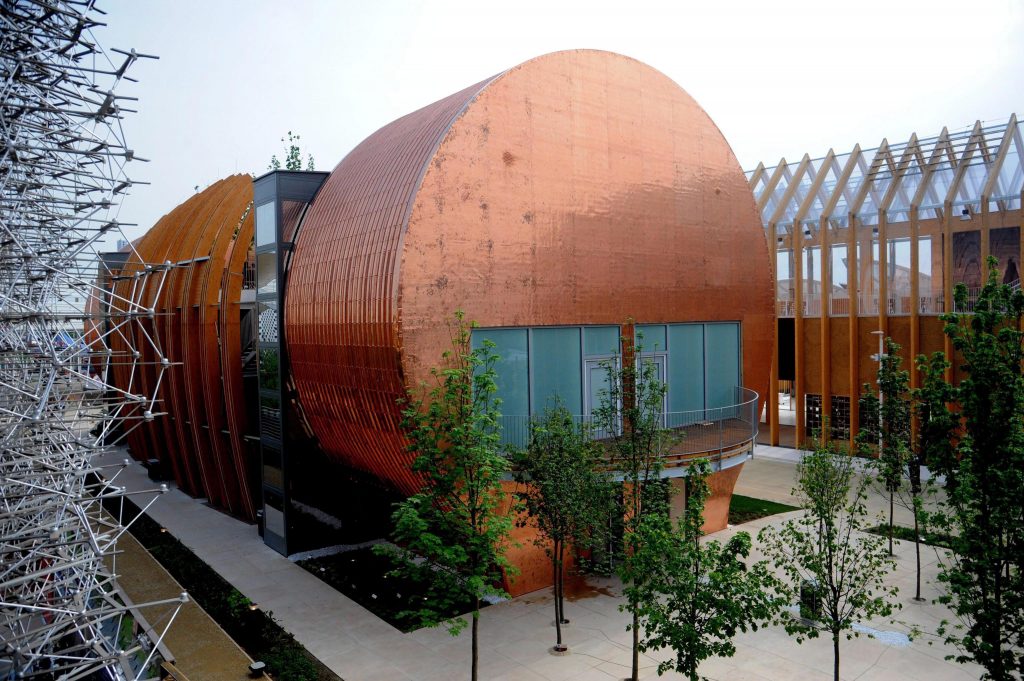The https://english.atlatszo.hu use cookies to track and profile customers such as action tags and pixel tracking on our website to assist our marketing. On our website we use technical, analytical, marketing and preference cookies. These are necessary for our site to work properly and to give us inforamation about how our site is used. See Cookies Policy
Hungarian Pavilion of the 2015 Milan World Expo still swallows taxpayers money
The chief designer of the eclectic Hungarian Pavilion known as the „Shaman drum” filed a report to the Hungarian prosecution in September to stop wasting public funds on the now defunct and dismantled building, the remains of which have been transported to the Hungarian town of Karcag to rebuild. The infamous installment cost HUF 2 billion to erect in Milano, Italy, another HUF 2 billion to dismantle and transport to Hungary, and it is estimated that will cost more than a further HUF 1 billion to re-erect in Karcag.

The 2015 World Exhibition was held in Milan from 1 May to 31 October 2015. In 2013, the government appointed Géza Szőcs government commissioner to direct Hungary’s remarkable presence at the event. The result was the scandalous spending of HUF 5.2 billion of public funds, out of which the construction of the infamous Hungarian pavilion, the „Shaman drum” cost HUF 2 billion. The design of the eclectic building received serious criticism, and so did the price tag.
In 2016 the government allocated HUF 650 million for the dismantling and re-use of the pavilion. After nearly 2 years of procastrinating officials announced that the building will be moved to Karcag, where it will showcase the steppe and horse traditions of Hungarian history. Since the announcement the repatriation of the pavilion absorbed another HUF 2 billion of public money, before the reconstruction has even begun. In 2019 the government allocated another HUF 1 billion to Karcag to re-erect the building, so the „Shaman drum” cost HUF 5 billion in taxpayers money so far, and the reconstruction still did not happen.
In September 2019 Sándor Sárkány, chief designer of the pavilion, reported allegations of misconduct at the Jász-Nagykun Szolnok County Prosecutor’s Office for the procurement, construction and dismantling of the „Shaman drum” in Milan and for re-erecting it in Karcag. He claims that most of the building was made of wood, which rotted, so only the metal parts were actually moved to Karcag, where the ruin is stored in the open air and is in decay. The designer claims that this is a mismanagement of public property, as the steel structure cannot be rebuilt in its current state.
“They brought the skeleton home, and this skeleton is the alibi to draw hundreds of millions of forints, or even billions of forints, to re-build it. Well, I think this is all nonsense. I, who designed the building, obviously should want it rebuilt. But I don’t want it rebuilt. A lot of filth has been attached to this building, a lot of money has been spent illegally on this building, and I would very much like to stop using this thing for alibis. Karcag should not deceive its residents and the Hungarian taxpayers with my artwork.” – Sárkány said in an interview.
Sárkány named a number of public officials in his report to the authorities. He claims that Mihály Varga, Minister of Finance, Sándor Fazekas, former Minister of Agriculture (currently Member of Parliament), Sándor F. Kovács, former Chairman of the Szolnok County Assembly (currently Member of Parliament), Zoltán Dobos, Mayor of Karcag, Géza Szőcs government comissioner, and other public officials are responsible for the mismanagement of the project.
Jász-Nagykun-Szolnok County Prosecutor’s Office transferred the designer’s complaint to the Budapest Regional Prosecutor’s Office because of the involvement of politicians protected by legislative immunity.
Written by Katalin Erdélyi. You can read the more detailed Hungarian language story here. Photo: The Hungarian Pavilion at the Milan World Expo on May 5, 2015. (MTI / EPA / Stefano Porta)


